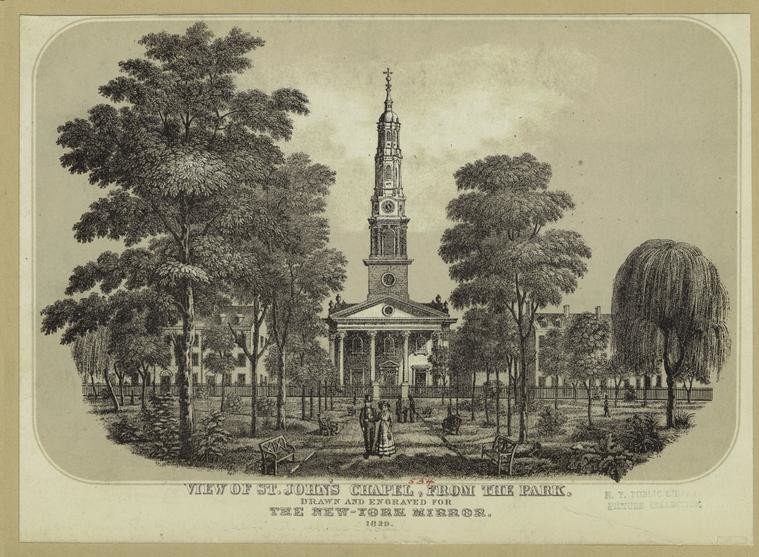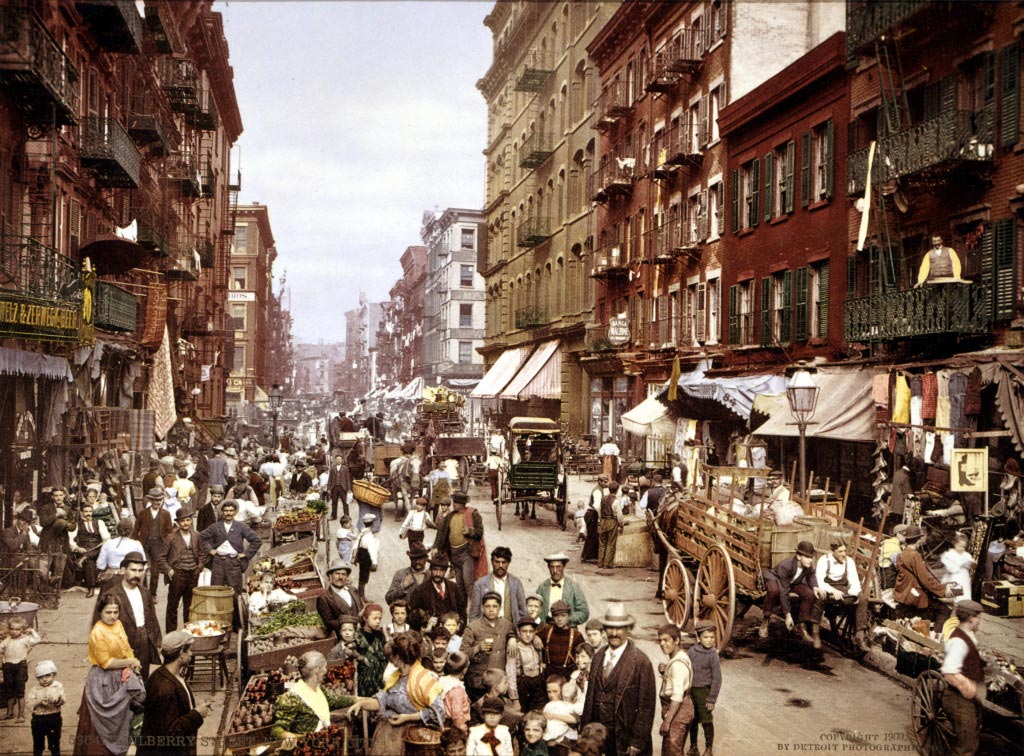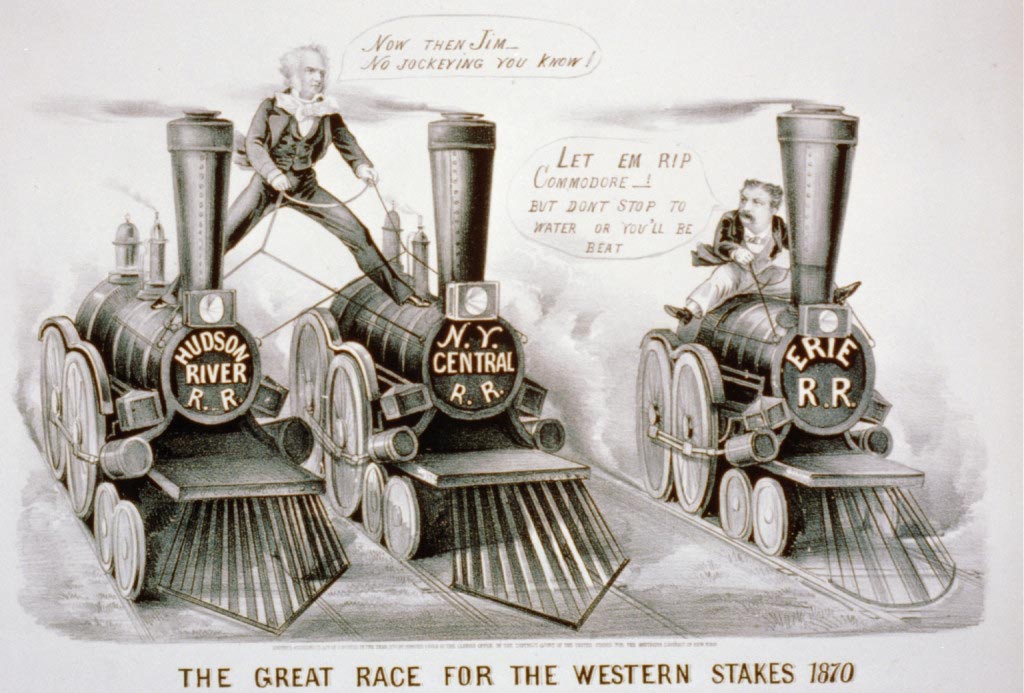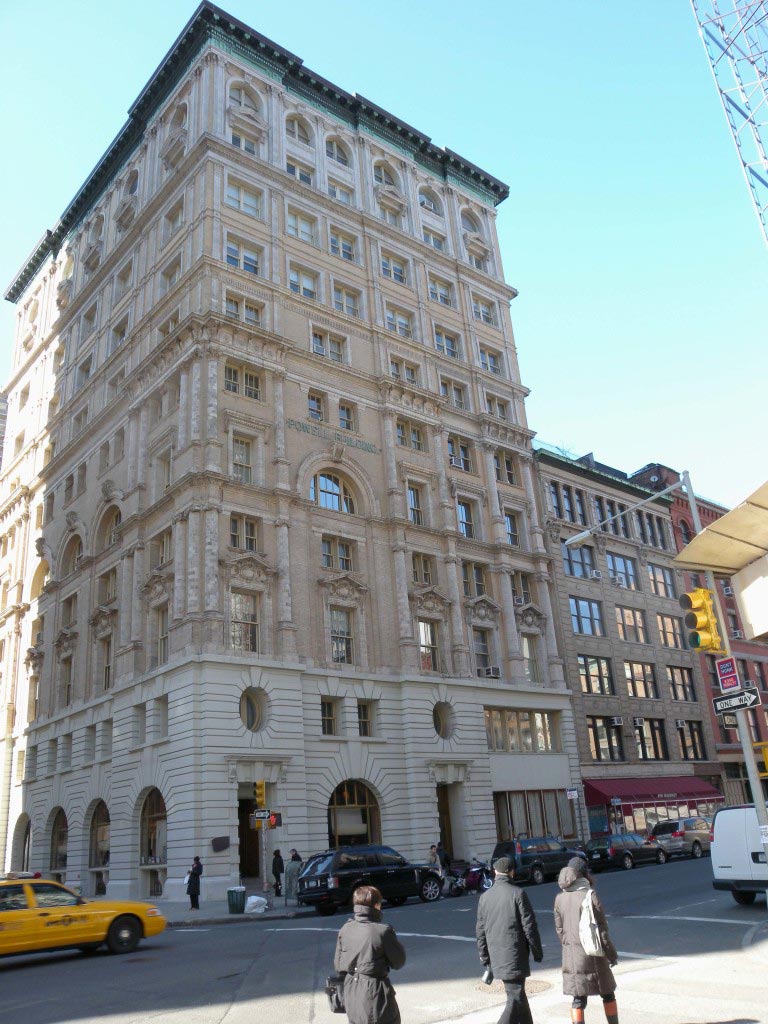The story of Tribeca is one of opposites, from frantic energy to apathetic stillness that fluctuated throughout the centuries, yet a pervasive drive for progress and advancement has characterized the evolution of Tribeca’s streets, buildings, and residents.
 PC: New York Public Library Digital Collections
PC: New York Public Library Digital Collections
A simple marsh, constantly afflicted by floods located above colonial downtown New York (now renamed as the Financial District) captured the imagination of the Trinity Church as a prospective community. Secured in 1705, Trinity Church built a second chapel and planted a large, peaceful garden adjoining the new St. Johns Church.
St. Johns Park and Church cultivated a country-esque peacefulness with convenient access to all the firms established downtown. With 64 parcels of land leased to residents, beautiful brick houses, fences, roads, gaslights, and gardens emerged from the forsaken wasteland and became one of the first residential neighborhoods outside of the main city by the late 1700’s.
 PC: Library of Congress Prints and Photographs Division
PC: Library of Congress Prints and Photographs Division
Tribeca’s quiet streets quickly evaporated under the intense glare of the industrial age as New York City’s piers relocated to the Hudson River and docked at Tribeca. The piers brought ships, food, people, and rats to the composed citizens who had attempted to evacuate the city and all her charming traits.
Soon, brick houses and gaslights were replaced by wooden market stalls and boisterous voices clamoring for fresh fruits and vegetables. Washington Market embodied a marketplace with rickety stalls, fruits, loud vendors, and curious smells that wafted throughout the streets, creating what the New York Times described a “…dirty, degraded little rat-hole” in 1872.
While fruits and vegetables from Charleston, North Carolina, Maine, and Bermuda were available for all New York dwellers on weekdays, a silence filled Tribeca on weekends as streets emptied and buildings were abandoned. Although the brick houses had been redeveloped by ambitious businessmen, there were only warehouses and lofts designed to contain and safeguard produce while residential homes were neglected.
 PC: Library of Congress Prints and Photographs Division
PC: Library of Congress Prints and Photographs Division
While the navy piers brought the steamboats and the bridges brought the wagons, it was Cornelius “Commodore” Vanderbilt who brought the trains and all their cargo and noise to Tribeca. Originally a poor sailor, Cornelius bought St Johns park and transformed it into a freighting mecca that centralized every train from across the river to Manhattan and beyond.
Trains hurtled down Hudson Street and replaced what was left of residential homes with commercial buildings for the expanding industries to live in. Goods flooded down these expanding canals and brought resources to millions of New York residents who demanded only the highest quality of produce. The egg and dairy district thrived under the tumultuous expansion and began to usurp some of the Romanesque Revival style warehouses for eggs and dairy products.
 PC: Jim Henderson
PC: Jim Henderson
The explosive prosperous growth from the trains could not last forever, and in the 1950’s, trains lapsed as trucking appropriated the trade industry. Large warehouses, loading docks, and train centers were no longer necessary for providing New Yorkers with goods, and so silence reigned over the streets once more.
Decades later, SoHo renegades would forego the swelling prices and utilize the large, open lofts for art and sleep. To conserve the unique historical architecture and legally work and sleep in the same location, ambitious artist inhabitants attempted to rezone only a block of the neighborhood.
It was a mistaken reporter who thought that the whole neighborhood, normally known as Lower West Side, was to be renamed Triangle Below Canal Street. The name stuck and the neighborhood that internalized so many contradictions was baptized as Tribeca and has remained a crucial monument to where we have been and what we did there.




